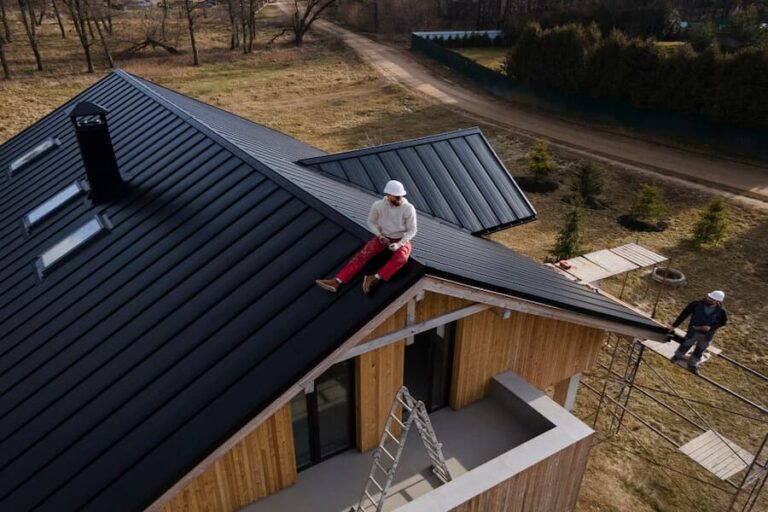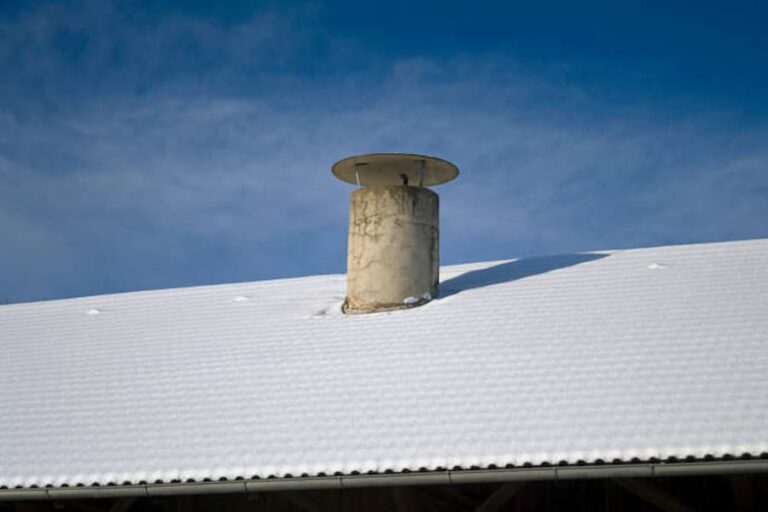Quick Guide to Emergency Roof Leak Repair in 2024
In the unpredictable journey of homeownership, unexpected challenges like roof leaks can suddenly appear, leaving you in need of immediate solutions. Here at Build In Common, we’re dedicated to empowering our community with the knowledge and tools necessary for addressing emergency roof leak repair. This guide is crafted to help you quickly navigate the repair process, ensuring your home remains a safe haven.
Taking Immediate Action with a Tarp for Roof Leaks
First, safeguard your belongings by positioning buckets beneath leaks and drying any damp floors. Prioritize safety by assessing if the leak poses any risk to you or your loved ones. Address slippery surfaces promptly, and consider turning off electricity if there’s a chance the leak could affect your home’s electrical system.
A seemingly minor leak near electrical systems can escalate into a major safety issue. If there’s any indication that the structural integrity of your roof is compromised, vacate the premises immediately. Here’s a step-by-step plan to manage the situation until you can get professional assistance:
Step 1: Pinpoint the Leak’s Source
Tracking down the source of the leak can be tricky, as water doesn’t always drip straight down. If you’re able to, inspect your attic for any signs of moisture, such as wet insulation, stains, or dark tracks. Focus on areas around skylights, chimneys, and where the roof meets walls, as these are common roof leak locations.

Look for any signs of moisture or discoloration that indicate a leak. If accessing the attic isn’t an option, or you don’t have one, try to spot any potential issues from the ground level outside your home.
Step 2: Assemble Your Tools
Being prepared with the right equipment is crucial for an effective and quick fix. You’ll need:
- A sturdy ladder to access the roof
- Gloves for safety
- Buckets for catching water
- A flashlight for visibility
- Tarps or plastic sheets for coverage
- Roofing nails and a hammer for securing the tarp
Step 3: Drain the Water
After ensuring everyone’s safety, take steps to minimize water damage. Place buckets or other containers under leaks to catch dripping water. Employ a wet-dry vacuum if available and use a dehumidifier to reduce moisture. Move any furniture and safeguard valuable items by moving them to a dry location.
Use a screwdriver to puncture the ceiling where water is pooling. This action helps prevent further water spread to other areas of your home.
Step 4: Cover the Affected Roof Area
Now, it’s time to apply an emergency roof tarp over the damaged area. Ensure the tarp covers the leaky spot adequately and secure it with boards and roofing nails or screws for a tight fit.
Not all leaks require immediate professional intervention, but some signs indicate the need for quick action. Consider it an emergency if you notice:
- Water stains exceeding three inches in diameter
- Active dripping or pooling of water inside your home
- Observable damage to the roof
- Leaks in proximity to electrical systems
- Several places where leaks are evident
- Upcoming severe weather that could exacerbate the leak
This guide aims to prepare you for swift and safe action upon the first signs of a roof leak, ensuring you protect both your home and family from potential harm.
Safety Tips for Temporary Roof Repairs
Your safety is paramount. Wear slip-resistant shoes and avoid repairs in bad weather. Remember, DIY efforts are commendable, but recognizing when a task exceeds your abilities and calling in professionals is crucial.
Recent statistics show a 21% increase in roofing accidents, primarily due to falls. It underscores the importance of proceeding with caution or opting for professional help.
Recognizing When to Call for Emergency Roofing Services
Certain situations necessitate professional intervention:
- Significant Damage: Extensive damage requires expert repair.
- Safety Concerns: If the repair is too risky, leave it to the experts.
- Persistent Leaks: If DIY fixes haven’t solved the problem, it’s time for professional help.
Advantages of Professional Emergency Roof Leak Repair
Opting for professional emergency roofing services offers numerous benefits:
- Expertise: Professionals bring valuable experience and knowledge.
- Quality Materials: Access to superior materials ensures durable repairs.
- Cost Savings: Though it may seem expensive upfront, professional repairs are more cost-effective long term.
- Insurance Guidance: Professionals can help navigate insurance claims for roof repairs.
Emergency Roof Leak Repair Costs
Explaining financial aspect of emergency roof repairs can be daunting, especially when trying to understand the varying costs based on roof size, material, damage extent, and other influencing factors. Here’s a breakdown to help you anticipate the expenses involved in getting your roof back to its best.
Costs for Temporary Fixes
Opting for a temporary solution can be a cost-effective way to manage a leak until a more permanent repair can be made. DIY temporary repairs mainly require purchasing materials, such as a tarp, which can range from $10 to $50 at most home improvement outlets. If you prefer a professional to perform a temporary patch, expect to spend between $100 and $1,000, according to experts.
Permanent Repairs and Replacements
For long-term solutions, the price tag varies significantly. The cost for a professional to fix a leaking roof falls between $360 and $1,550, with specific repairs falling within these ranges:
- Flashing Repair: $200 to $500
- Gutter Fix: $180 to $560
- Hail Damage Mitigation: $700 to $4,000
- Skylight Leak Rectification: $300 to $800
- Complete Roof Overhaul with Asphalt Shingles: $5,800 to $12,600
- Vent Leak Resolution: $75 to $250
Note that these figures apply under standard conditions. In emergency scenarios, the cost might significantly increase.
Determining Factors in Roof Repair Pricing
Several aspects will dictate the final cost of roof repairs:
- Material of the Roof: The type of material, from asphalt shingles to metal or tile, can impact the cost, with asphalt being on the lower end of the expense spectrum.
- Damage Scope: The cost increases with the extent of the damage. Significant issues extending to the underlayment or decking will incur higher costs.
- Leak Origin: The cause of the leak influences repair methods and costs. Issues like vent and skylight leaks might need simpler fixes like new sealant or flashing, while damage to shingles may demand more extensive labor and materials.
- Seasonal Demand: Prices can fluctuate based on demand, especially in regions and seasons prone to severe weather conditions that increase the need for roof repairs.
- Insurance Coverage: The cause of the leak, if deemed a covered event such as storm or fire damage, could mean your out-of-pocket expenses are limited to your insurance deductible.
Understanding these factors and the associated costs can help you better prepare for managing roof repair expenses, ensuring you can make informed decisions about protecting your home from further damage.
Risks of Neglecting Roof Repairs
Ignoring roof repairs can lead to serious issues:
- Property Damage: Unaddressed leaks can cause extensive damage to your home.
- Health Risks: Moist environments foster mold and mildew growth, posing health hazards.
- Structural Issues: Continuous leaks can weaken your home’s structural integrity.
- Increased Utility Bills: Leaks can damage insulation, leading to higher energy costs.
Emergency Roof Leak Repair Near Me
For those how wants a professional nearby, Build In Common is here to provide swift, reliable emergency roof leak repair services. Don’t let a leaky roof compromise your home’s safety or comfort. Contact us for prompt assistance.
Frequently Asked Questions
Is a ceiling leak an emergency?
A ceiling leak demands urgent attention if the water spot extends beyond a few inches, you observe multiple leaking spots, encounter pooling or flowing water, or if electrical systems might be at risk.
Can you fix a leaking roof from the inside?
Addressing a roof leak from the inside is feasible if you can access the source of the leak in your attic. Employing a temporary patch kit can offer a short-term solution.
How can I repair a roof leak in the attic?
For attic roof leaks, minor issues can be temporarily mended with patches or epoxy. However, significant leaks necessitate the placement of a tarp on the roof. It’s imperative to engage a certified roofing specialist for durable repairs, regardless of the leak’s magnitude.
How do you temporarily stop a roof leak?
To swiftly halt a roof leak, deploying a tarp over the compromised section and securing it firmly is a quick and effective method to prevent further water ingress.
Conclusion
In conclusion, addressing a roof leak promptly is important to prevent further damage to your home. Whether it’s a small drip or a significant water intrusion, understanding when a leak is an emergency, how to temporarily mitigate damage, and recognizing the signs that professional repair is needed can save you from costly repairs down the line.
Temporary solutions like using tarps or patch kits can offer immediate relief, but ultimately, consulting with a professional roofer for a permanent fix is the best way to ensure your roof remains in top condition.







